
The Free Press

Ken Burns is the most famous documentary filmmaker in America. He has made 35 films over the past five decades on subjects like the Civil War, Vietnam, Jefferson, Franklin, the Roosevelts, the Statue of Liberty, baseball, jazz, Muhammad Ali, and many more.
He said of his most recent film, The U.S. and the Holocaust: “I will never work on a film more important than this one.”
No matter how many movies you’ve seen or books you’ve read about the Holocaust, Burns’ new film, which focuses on the U.S.’s response to the worst genocide in human history—what we did and didn’t do—is bound to both surprise and horrify you.
In honor of Holocaust Remembrance Day, I spoke to Burns about why a filmmaker of American history takes on the Holocaust and what this dark period tells us about the chasm between our ideals and our reality. Below are some excerpts from our discussion, edited for length and clarity.
I went into this conversation to talk about FDR, the antisemitism inside the State Department, eugenics, immigration quotas, Charles Lindbergh, Father Coughlin, and more. What I didn’t expect was the intense exchange we had about the responsibilities of writing history, about the uses and misuses of the Holocaust as a political metaphor, and about the way Burns’ own worldview colors his work and how mine colors the way I see a film like this one.
—BW
On telling the story of the Holocaust as a human one:
BW: I want to start with one of the first scenes of the six-hour documentary, which is about the Frank family. Many have read the diary of Anne Frank, but you decide to tell this story in a new light by focusing on her father, Otto Frank, and the way that he desperately tried to get the Franks into the United States. He couldn’t, despite having all of the connections one would need to make it from Europe into America. This theme—America’s policy toward Jewish refugees during the war—underscores the entire film. Why did you decide to open with this story of Otto Frank desperately trying to escape, instead of the story that we know, of an innocent little girl hiding in an attic?
KB: Let’s remember that the diary of an innocent girl, who is often the point of entry for many Americans and certainly schoolkids to the story of the Holocaust, isn’t about the Holocaust. It’s about everything leading up to the moment of her arrest and the overshadowing fear of hiding in the secret annex. As a country, we think we’re disconnected from that, but we are not. We are culpable. Otto Frank had connections in the United States. He had crossed every t and dotted every i and he still couldn’t get in. What I wanted to do is leave our audience with the sense from the very beginning that she could be here and still be alive.
We’re required to particularize this story in a way that we don’t usually do. We say six million and it means nothing. It’s opaque. It’s dense. By particularizing it, you begin to realize that it’s not a number; it’s a set of individuals. And that the lost potentiality of those individuals is the greatest crime.
Which symphonies weren’t written? What children weren’t tended with love? What gardens weren’t raised? There’s a lot of missing human beings as a result of the madness that we call, in retrospect, the Holocaust.
On American ignorance during the Holocaust:
BW: The convenient narrative that a lot of Americans, including some American Jews, tell themselves about why the U.S. did so little to save European Jewry is that they just didn’t know. What your film does is make the case that, in fact, they did know. For example, you show Kristallnacht—the night of broken glass—on the front pages of scores of American newspapers in 1938. In one really memorable, chilling moment, you play a tape of Edward R. Murrow, in December 1942, saying “there are millions of human beings, most of them Jews, being gathered up with ruthless efficiency and murdered.” That was broadcast to millions of Americans around the country. In short: You tell a story that flies in the face of the accepted narrative about American ignorance. Did you grow up with the notion that Americans just didn’t know? And how much of what you found surprised you?
KB: The latter question is the easiest to answer, and it’s everything. And that’s true of every film. We don’t make films about subjects that we know about and then tell you what to know. Last time I checked, that’s called homework. We’d rather share with you a process of discovery. So there’s not a moment in this where it wasn’t overwhelming. I grew up, ostensibly, Episcopalian. My father was a cultural anthropologist, and he made me watch Judgment at Nuremberg at a young age. I knew America had a complicated past. We seem to think we know, each generation, who the real Americans are and who aren’t, which has gotten us into an awful lot of trouble and continues to get us into trouble.
On the influence of American media during the Holocaust:
BW: I grew up understanding that the American press bore tremendous responsibility for burying the story of the Holocaust. Only 26 of the 24,000 front-page New York Times stories during the entirety of the war were about the Holocaust. The Times’ first story on the Nazi extermination campaign, which described it as the greatest mass slaughter in history, appeared on page five, tacked onto the bottom of a column. Since your film makes the case that everybody knew what was going on in Europe, how do you understand the role that the American press played during this period?
KB: We can look at American media and say everybody knew. But we can also see that if it’s a tiny little thing on page six, as Deborah Lipstadt points out, maybe the editors don’t really believe it. What you have is all the vestiges, all the traces, all of the smells that are retained from a country that is suffused in antisemitism. And that’s going to infect the ranks of your newspaper. It’s going to infect the college that you may want to go to. It’s going to affect the conversations in the schoolyard between your kids and the neighbors’ kids. It’s going to be there in the bloodstream. And if you’re reading Henry Ford’s newspaper, then you know in your bones how bad and evil Jews are.
On the role of a documentarian:
BW: It is very clear in the film that you are trying to connect the tragedy of that period of history to America today. The film ends with a montage that includes images of “go home” graffiti on mosques, tapes of Trump yelling to build the wall, news clips of the Tree of Life massacre in Pittsburgh, the Charlottesville rally in 2017 where white supremacists shouted “Jews will not replace us,” and then finally, the January 6th attack on the Capitol. Talk to me about the choice to end the film in this way.
KB: We just assumed we would end with LBJ at the Statue of Liberty in 1965 dedicating the Immigration and Nationality Act of 1965, the work of Emanuel Celler, a Jewish congressman from Brooklyn, but we couldn’t do that ending because of what was happening in our country. It’s not a throughline. Out of six and a half hours, there’s a three-minute montage that takes us from that time—George Lincoln Rockwell and the American Nazi Party—to the Camp Auschwitz t-shirt that one of the January 6th insurrectionists was wearing. And that’s the last image of the film.
When we finish a film and we sign it, it’s no longer our film. It’s your film. And that’s what’s so interesting about our conversation today. I’m talking to somebody who has fully appropriated, appropriately, the film that we signed our name to. Because once that story is out, how it lands, how it’s heard, how it’s retold, how it’s excerpted, is your business. And that’s what makes this kind of exchange so thrilling, because you realize that it’s this ineffable “something” that is being transferred in the story that permits us to have the kind of conversation that we’ve had today.
On history repeating itself:
BW: There’s this moment in the film where one senator in the 1930s says, “This country belongs to the people of this country. While hundreds of thousands are hungry, millions of children underfed, and hordes of young boys and girls seeking jobs without the ability to get them, I’m not willing to let down the bars.” We don’t even need to name names, but it sounds a lot like several Republicans today.
KB: And there’s another senator who said in 1940 or 1941: “I want to build a wall high enough that no one can get in.”
BW: Right, and it has a really emotional effect. The hair on my neck stood up. I wonder: What pitfalls do you see in drawing comparisons between then and now?
KB: History has never repeated itself. There’s not been a single event that’s happened again. To be able to perceive larger patterns, that’s our work in life. Why am I here? What is my purpose here? What is the meaning of life? These are the essential questions, but we’re distracted by all of these grievances. Human nature is always the same. Greed and generosity, puritanism and prurience, virtue and vice, they’re always there. And they’re not just between you and another person. They’re within you and within me. So when Daniel Mendelsohn says in the film, “Don’t kid yourself, it could go that way. It doesn’t have to, but it could,” then he’s saying to you, “Stop the next one.”
On the use and misuse of history:
BW: I see Mendelsohn saying, “Don’t kid yourself, it could go that way,” and then I see a clip of Trump yelling to build the wall. I get a very distinctive political message from that.
KB: Yeah, it’s not political. The authoritarian playbook is being practiced in lots of different places. You know, if you’re an employee of the state of Florida and you just don’t agree with your governor and you’re fired, that’s out of the authoritarian playbook. People who are not authoritarians say, “Oh, you disagree with me? Let’s have a discussion. Let’s see whether there’s common ground.” But Florida’s not doing that. It’s saying, “Disney, we’ve given you favorable treatment for so long. But you think that the LGBTQ community has equal rights? Well, we don’t. We’re going to take away those special privileges you have.” I was just trying to call out this authoritarianism.
BW: Thinking about the uses and misuses of history, when I see people on the right saying that Fauci is like Dr. Mengele, or calling COVID vaccines “Nazi shots,” or when I see Marjorie Taylor Greene likening mask mandates to the yellow star, I am absolutely disgusted. I wonder if we should be hesitant from any political perspective to use Holocaust motifs and symbolism in trying to understand contemporary American life.
KB: After much reflection and soul searching and arguments and disagreements, we decided we had to skate on that thin ice. I don’t think we could have gotten away with any other ending but the one we had, but you’re right, it opens up a can of worms. Does it imply that you can use the Holocaust as something in your back pocket to get out of jail? I don’t want that to happen. These were the kinds of conversations that we struggled over.
BW: Yes, exactly. That’s why I think it’s so interesting.
KB: There was a reason to end the film the way we did: Maybe one person would go, “You know what? There’s too much of this stuff today. That’s a lot like what happened then. I don’t want this to happen. I believe in American institutions.”
On The 1619 Project and framing history as a narrative:
BW: We’re living through a debate on American history. To be very crude about it: We have 1619 on the one side, emphasizing slavery, racism, and oppression; it’s a deeply tragic view of our national story. On the other side we have 1776, which basically says: Yes, we had flaws, we had slavery, but the ideas that this country brought into the world and made manifest were exceptional. It says that slavery was something which ended precisely because of those ideas. How do you understand this debate and how has this film changed your answer to that question?
KB: The film hasn’t changed a thing because it’s not a choice. I don’t fall into one narrative or the other, because you can bring them all together. It’s not kumbaya. It’s just that you don’t have to subscribe to one particular historiography. And when you say 1619, you’re just abbreviating a whole set of perspectives on American history.
BW: Of course I am!
KB: You’re just abbreviating a whole set of perspectives. Why can’t you just have a multiplicity of modes of inquiry that permit you to see all of those perspectives? I don’t have to subscribe to a single perspective, because subscribing in and of itself is a binary thing that says red state/blue state, yes/no, good/bad, male/female, up/down, north/south, east/west. There’s no black and there’s no white. There’s only shades of gray. And this is what makes narrative possible. Stories mitigate, ameliorate, and inform not just conflict, but love and relationships and loss and grief. You didn’t ask me about any of that stuff, but that’ll be the next time we have a conversation.
Listen to the full conversation between Bari and Ken:
And if you never miss an episode of Honestly, the best way to support the show is by becoming a subscriber to The Free Press:


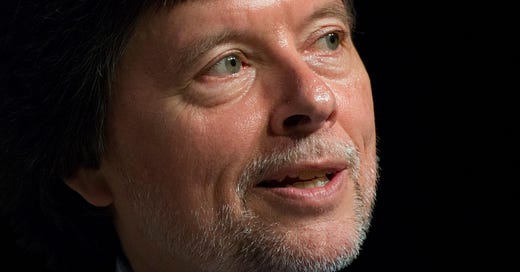



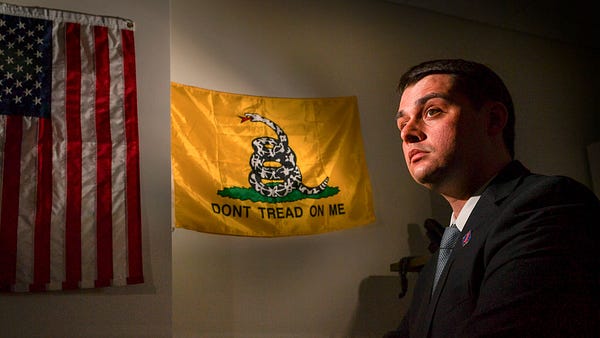

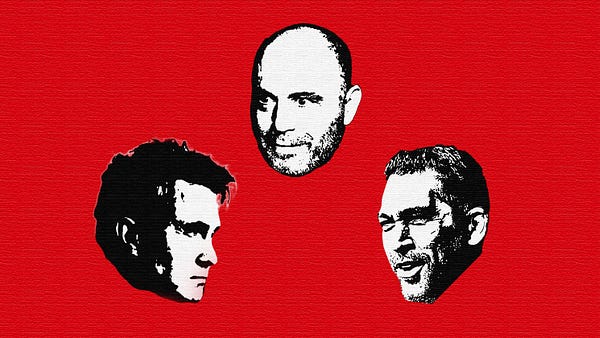

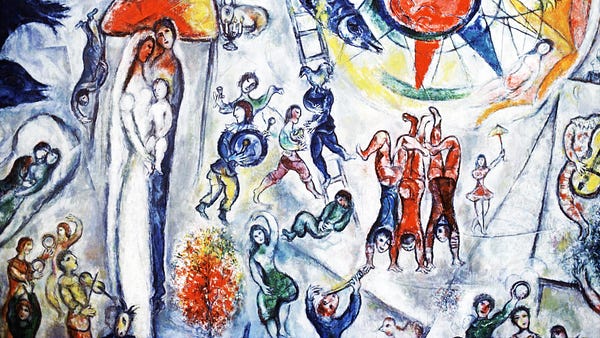

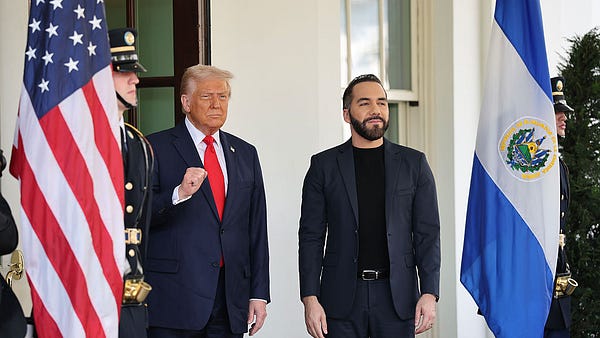

Ken Burns is a great film maker, but he is so biased that when questioned reasonably he turns into Kamal Harris and responds with word salad. Seriously, how do we trust anything he has ever done now that we know how deep his bias runs? Bari was great as usual. I couldn't believe how he stumbled in the entire final 15 minutes.
His version of history is clouded by his bias and I will never look at one of his documentaries the same again. Bummer!
The canard that the US military should have fought WWII in Europe on behalf of the Jews has been around a long time. Edward Murrow speaks one line on radio, and it's taken as proof the US knew of the death camps. Since the death camps were only operational in 1942, although less efficient methods had been tried in 1941, Murrow's accusation of murder seems prescient. Perhaps he read Mein Kampf and believed it. Certainly, Jews were kept out of the United States before the war broke out. I did not know about Otto Frank, but I certainly knew about the ship of Jewish refugees that was denied entrance to any country it tried, including the US. As emotional as this all is, wars are not intellectual exercises in what if. They are very real, very bloody. And they're not that easy to win.
The US did what had never been done before - we won two major wars on separate fronts. And a lot of Americans died. More came home injured and/or traumatized. Most Americans didn't even know where Germany or Japan was located, but they stood in lines to sign up once Pearl Harbor was bombed. They signed up to save America. And they trusted the military to safeguard their sons, fathers, and husbands as much as possible. Our soldiers were gone for as long as five-six years. No weekend passes back to the USA. I just want to know how you would explain to an Iowa housewife why her son died, if not for the US? Once you explain that, you can explain exactly how you think the European war should have been fought. Did American planes carry enough fuel to reach the denizens of Warsaw from England, and return? If not, where do you think they should have refueled? They say wars are won by boots on the ground. How do you think American boots could get to even Dachau from England? The US Army landed in North Africa in November 1942. My Dad was supposed to be there, but was waylaid by an injury. He said the troops were referred to as cannon fodder. No one expected a lot from those guys. My uncle was at the landing at Anzio. He was a newly minted doctor who came back to the US with white hair and a permanent despondency. The fighting up Italy's backbone was fierce and bitter. And they did eventually get to Dachau, by fighting German troops foot by foot up the length of Italy. But that's how wars are won. By real men in real battles.
I believe the actual reason Ken Burns made this film and considers it so important is that he has accepted the great lie that Trump is a modern day Hitler and we, his cheering supporters, are all enthusiastic fascists. What a joke! Liberal Democrats see an exhuberant rally and think Nuremburg. They've apparently never been to a high school spirit day or a college football game. Masses of people cheering and having fun - without doing drugs - must all be fascists. I can only assume that Ken Burns is now in hiding, being careful not to stay in one place too long, since he's uncovered the great fascist plot. Or at least that he was until Smilin' Joe set him free. In the meantime, those idealistic Antifa goons who appear at night to riot, set fires, intimidate the locals - those are Anti-fascists. Any similarity to the Brown Shirts is purely imaginary. Sure!
If this effort of Ken Burns does anything, in my opinion it lays bare the weakness of intellectuals, who are subject to the same group think as others. It is a compilation of half-truths and misconceptions that basically argue for the proverbial ivory tower. So disappointing.